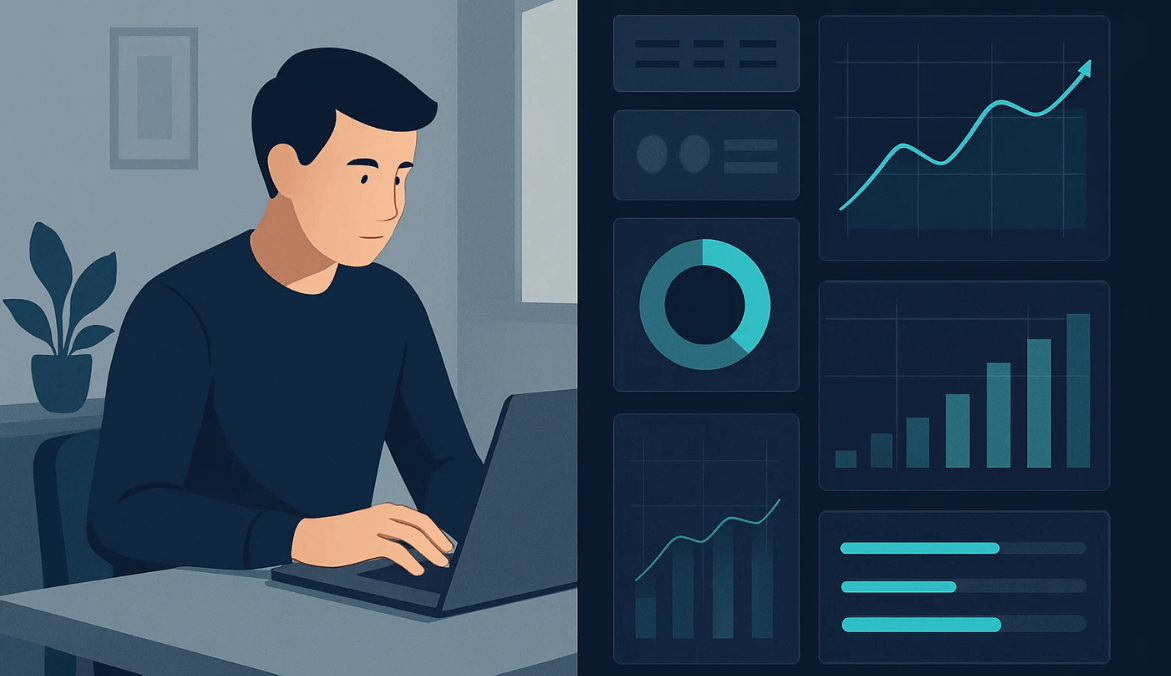Introduction
If you’re leading a team in 2025, chances are you’ve either heard about employee monitoring or you’re already using it. What started as a niche tool for IT security has now become a mainstream business practice across industries.
The shift to hybrid work, rising compliance needs, and the demand for productivity insights have all accelerated adoption. And the latest employee monitoring statistics are nothing short of eye-opening.
In this article, we’ll walk through the global adoption numbers, industry breakdowns, productivity impact, employee perceptions, compliance trends, and what the future holds.
Global Employee Monitoring Statistics 2025
The use of employee monitoring tools has skyrocketed over the past five years.
- A staggering 96% of companies use some form of time-tracking software.
- By 2025, 70% of large enterprises report active monitoring of their staff.
- Gartner estimates that 71% of employees are digitally monitored, up nearly 30% from the previous year.
- Among hybrid or remote setups, 73% of employers track activity, while 75% monitor in-office employees as well.
📌 What this tells us: Monitoring is no longer reserved for security-sensitive organizations. It’s a standard workplace practice across industries and geographies.
Industry Adoption of Employee Monitoring in 2025
Monitoring isn’t uniform across sectors — adoption depends heavily on compliance needs and workforce models.
- Finance & Banking: Driven by strict regulations and the need for stronger security controls. HSBC’s recent expansion of biometric and surveillance systems is a clear example.
- Healthcare: Patient data compliance (HIPAA) makes monitoring essential.
- IT & Outsourcing (BPOs): High adoption rates (70%+) due to remote/global workforce management.
- Advertising & Marketing: 83% of the industry uses employee monitoring software.
📌 What this means: Regulated industries treat monitoring as compliance-first, while others use it as a performance optimization tool.
How Employee Monitoring Impacts Productivity & Performance
Does monitoring actually work? The statistics suggest it can — but context matters.
- 55% of managers say remote monitoring improves team productivity.
- 62% of organizations reported improved employee accountability on task completion
- 81% of companies report an increase in overall work output after implementing employee monitoring.
However, monitoring is a double-edged sword:
- If used transparently, it drives accountability and clarity.
- If used secretly or punitively, it damages morale and trust.
📌 Key takeaway: Productivity gains are real — but they depend on trust and transparency.
Remote & Hybrid Work Monitoring Trends in 2025
Remote and hybrid work remain the biggest accelerators of monitoring adoption.
- In the U.S., 15%+ of all jobs are remote in 2025 — triple the number in 2020.
- Globally, 48% of the workforce works remotely (double pre-pandemic levels).
- In March 2025, 42.8% of U.S. employees with advanced degrees worked remotely..
📌 Key takeaway: As remote work stabilizes at nearly half the global workforce, monitoring will remain a core management strategy.
How Employees Feel About Workplace Monitoring
The numbers show a significant disconnect between employer and employee perspectives:
- 68% of employers believe monitoring improves work output.
- 56% of employees admit to feeling anxious when they know they’re monitored.
- Nearly half of remote employees (49%) fake being online, 31% use anti-tracking tools, and 25% resort to hacks to avoid constant scrutiny.
📌 The real insight: Monitoring without employee buy-in risks fueling resistance and disengagement.
Legal & Compliance Data on Employee Monitoring
The regulatory environment around monitoring is tightening fast:
- EU (GDPR): Companies must provide clear consent and transparency. Courts continue to uphold employee privacy rights.
- United States: New York mandates explicit disclosure when monitoring digital activity. Other states are drafting similar laws.
- India: Under the DPDPA, 2023, employers must obtain explicit consent for monitoring, balancing legitimate business needs against the employee’s constitutional Right to Privacy.
📌 Key takeaway: Monitoring isn’t just about productivity — it’s about legal protection and risk management.
Future of Workplace Monitoring: AI and Emerging Trends
- The employee monitoring market is projected to reach $12.5 billion by 2032.
- By 2025, workplace monitoring is set to become the new corporate standard, with a projected 7 out of 10 large employers adopting these tools to redefine productivity and management.
Challenges & Risks of Employee Monitoring in 2025
The growth of monitoring also brings serious challenges:
- PwC’s UK staff pushed back against “traffic light” attendance dashboards tied to bonuses.
- In California, labor unions are campaigning for laws to restrict AI-driven monitoring and off-the-clock tracking.
📌 Key takeaway: Companies must balance monitoring with ethics and transparency to avoid reputational and legal risks.
Key 2025 Takeaways for Leaders
- Employee monitoring is now mainstream across industries.
- Productivity benefits are real, but only if paired with transparency.
- Employee trust is fragile — perception can outweigh performance data.
- Compliance is as big a driver as productivity.
- AI-driven monitoring is the future — but so are privacy regulations.
Conclusion
Organizations that adopt transparent, ethical, and balanced monitoring practices will not only protect themselves legally but also foster accountability and long-term trust with their teams. As AI-driven tools and stricter regulations redefine the workplace, the companies that succeed will be those that treat monitoring as a partnership — enabling productivity without sacrificing employee dignity.
 Gift Card ₹999
Gift Card ₹999

